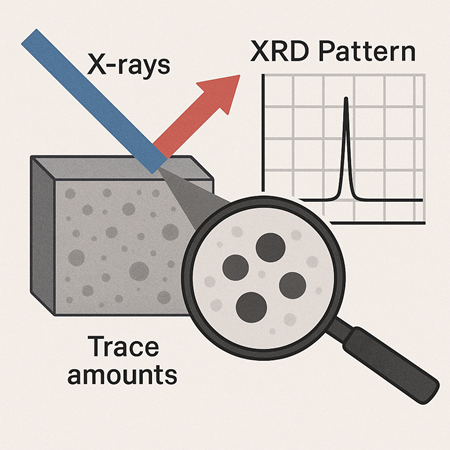What is Trace Phase Identification?
Trace phase identification by X-ray diffractions (XRD) is an analytical method to detect and identify small amounts of crystalline substances in a sample. It is essential in various fields, including quality control, research and development of materials, and environmental analysis. Because these compounds are present in such small amounts that, in some cases, they are difficult to detect with common measurement conditions, analytical methods with high sensitivity and high resolution are necessary for their identification.
Detecting trace phases is challenging because their diffraction peaks are often buried in the background tails of stronger peaks of the main components. To mitigate the issue, X-ray sources with high intensity and detectors with high resolution are used to increase the signal from these minor components Furthermore, the scan speed is typically set slower than usual to enhance the signal-to-noise (S/N) ratio. This facilitates more accurate detection of minor peaks.
In contrast, X-ray fluorescence (XRF) analysis provides information about the elemental composition of a sample, which is effective in the identification of unknown substances. XRF is particularly effective in detecting trace components at the ppm level, which is difficult for XRD.
Trace phase identification plays a significant role in various fields, such as quality control, materials development, and environmental analysis. XRD reveals the crystal structure, while XRF provides elemental composition information, which contributes to the identification of trace components in the sample. By combining these techniques, trace phase identification with high accuracy becomes possible.

Rigaku recommends the following products

Contact Us
Whether you're interested in getting a quote, want a demo, need technical support, or simply have a question, we're here to help.
